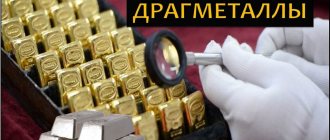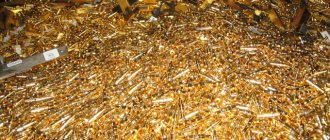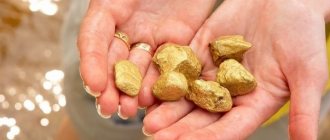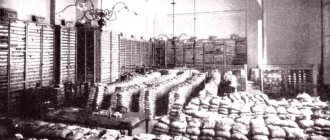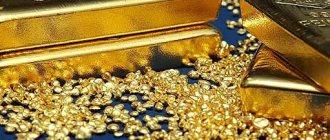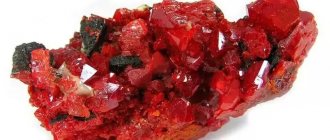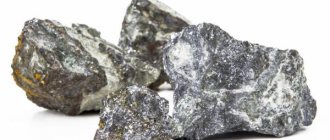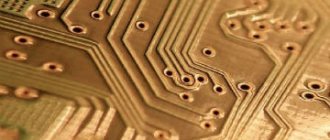January 16, 2021
Soviet-era electronics are rich not only in gold and palladium, but also in metals that can easily be classified as rare earths. They are valued much more than gold these days. The fact is that the number of gold deposits is increasing every year, but the deposits of hafnium, iridium and other rare earth metals are being depleted.
Most of the deposits of rare earth metals are located in China. Therefore, a country that can afford to export europium, yttrium, erbium, ytterbium and other metals can earn a lot.
Where to find and obtain radio components containing precious metals
Dear Internet users!
Send your photos and notes about where and in what devices you came across radio components containing precious metals. The list of decommissioned and subject to disposal devices, various units and radio communication units, containing precious metals in radio components and radio-electronic components in their composition, is simply huge. Ever since the collapse of the Soviet Union, when everything and everyone fell apart, when chaos and confusion reigned in the country, salaries were not paid, and many, in order to earn at least some money and feed their families, brought home and then dismantled various decommissioned electronic devices into radio components with precious metal devices from institutes and organizations. Until now, such devices are still gathering dust and awaiting their fate in garages, country houses, and sometimes in the open air, covered with corrosion. Well, let's start with the most common one.
Let's say right away that almost all radio components are on the boards. Transistors KT-803, KT-808, KT-809, KT-812, KT-908, KT-912 are usually located in the rear of the devices on aluminum radiators, transistors KT-911, 2T-911B are located on an aluminum base, for heat dissipation on the board.
Switches 11P 3N are attached to the body, and resistors PTP, PP3-41, PP3-43, PP3-47 can be located on a metal base inside the block or attached to the body of the device.
Therefore, you first need to find and disassemble the device or unit, remove the boards, and only after that extract radio components with precious metal. We must be prepared for this. There is an opinion that
TVs made in the USSR contain many valuable radio components. In fact, and in most cases, you can find several green KM5 capacitors there, and less often red KM6 capacitors. And also several KT-203 transistors, which cost 5-6 rubles each.
Parts with gold and the content of precious metal in them
Naturally, not all parts contain a lot of gold. Despite this, some people do not notice the huge amount of gold that they simply throw away. Which parts contain more of this precious metal? To put it into perspective, three computers contain about the same amount of gold as can be mined from two tons of gold ore.
Which parts contain the maximum amount of gold? Some radio components containing this metal are presented in the list:
- Microcircuits. The gold-plated outputs of the chip contain varying amounts of metal. In plastic parts, the gold content is quite low, only 0.5-1.2%; ceramic parts can already contain up to 5% gold.
- Fees. From some boards you can extract an impressive amount of raw materials. For example, most of it in a computer is contained in the motherboard and connectors. Given that computers are becoming cheaper and gold is becoming more expensive on the market, it makes some sense to mine it from a computer. In addition, many people throw away computers without realizing that they contain this valuable metal.
- Semiconductors and connectors. They do not contain much of this metal, but there is not only one connector in a computer.
- Resistors. It is rare in them, because they can use silver or (very rarely) platinum.
You can additionally mine this precious metal from circuit boards and old electronics. In the 70-80s, gold was often used to create many machines and devices. These include:
- military equipment devices;
- computing machines;
- radio tubes and others.
Well, what will come as a surprise to most is that phones also contain it. True, not exactly in phones, but in SIM cards.
Why is gold needed in devices?
The main reason for using gold in electrical engineering is its electrical conductivity as well as its high level of corrosion resistance. In addition, gold allows you to minimize the risk of sparks during operation of the device. However, gold, like any other metal on Earth, is limited in quantity, and therefore the recycling of production waste, as well as already used materials and products, becomes an extremely important process.
This process has become increasingly important due to the growing use of gold in electronics and radio applications.
In radio components, gold is used in the following forms:
- Gold leaf;
- Gilding, sputtering, galvanic gilding.
- Creation of extremely small but stable parts.
It is worth noting that upon initial inspection of the internal structure of the device, it is extremely difficult to notice the presence of gold. Even detailed disassembly does not always help to detect gold, since in this case only gold-plated contacts and solid components are visible.
In this case, the knowledge of the processing specialist is of great importance, since he must first know all the components with the maximum gold content.
The direct procedure for extracting gold from radio components is based on a number of important provisions:
- A large number of gold-containing products are required, each of them must be unusable;
- High purity of gold in the components in question.
- Potential for the extraction of a number of other metals along with gold.
The most valuable foreign and Soviet parts
In Soviet times, much more precious metals were used in the assembly of household appliances and other devices than abroad. This is due to the high quality and long service life of the equipment of that period. Therefore, Soviet devices are a real source of non-ferrous and precious metals. Most of such noble metals as palladium, gold, platinum and silver are contained in Soviet and Western capacitors. The most popular domestically produced capacitors are “KM N30” and red “5D”, in which the platinum content predominates. Palladium can be found in the KM N90 capacitor.
Capacitors “KM N30” and red “KM 5D”
It is these green and red capacitors that contain the most noble metals. Among foreign elements, the following are especially popular among radio enthusiasts:
- Tesla capacitors of different sizes;
- Bulgarian brown and blue capacitors of the “MbC” and “KbC” series marked “220n”;
- TaSF B45176-A1108-K;
- axial MIL-ETAH2.
Specialized enterprises buy and supply capacitors with different markings for use in computer, pulse, noise suppression and other fields of activity. To do this, they enter into supply agreements with trading companies.
How to find out where the precious metal is contained
You can find out which radio components contain the largest amount of valuable materials in special reference books. You can also find photos of valuable parts online and compare them with your own. From photographs you can also preliminarily determine the cost of the goods, based on prices on the Internet
Please pay attention to the model number and year of manufacture.
It should be noted that radio components are valued differently than other recyclable materials. The assessment is made depending on the content of valuable material, the year of production of the part and the method of applying precious metals. Most often the material is used in the form of spraying. The most expensive radio components are those in which non-ferrous metals are present in their pure form. Thanks to modern recycling technologies, it is possible to extract precious metals from even the thinnest layers.
You can ask for help in detecting precious metals at the collection point. Employees of a company that operates legally will always advise the client and advise him on issues of interest. Such organizations employ professionals who, after examining the device, can tell whether it contains valuable radio components. Many companies also have websites that display photos of the most expensive radio components and their prices. Based on the information provided on the site, you can independently evaluate the existing product, and then go to return it.
You can also compare the cost of one or another radio component offered by different companies. You should not sell parts to private buyers; they always offer a low price and can use precious metals for illegal purposes.
◄ Back to news
Which radio components contain precious metals?
When studying the categories of precious metals included in special electronics, as well as to search for electronics with the most expensive precious metals, you can refer to a special directory. It contains a detailed description of the proportions of metals and their content in the components.
Modern technology and science are amazing in their development. The greatest successes have been achieved in the development of microelectronics and radio engineering. At the same time, the presented cost of radio equipment is significantly higher than its production cost, this is explained by the fact that the manufacturer is trying to make additional profit, and then intermediaries and resellers come into play.
However, all this became possible thanks to the reduction in the cost of production of household appliances, as well as a general reduction in the amount of precious metals that are necessary for the production of household appliances.
Precious metals are used in technology in ever smaller quantities. However, previously their content in equipment was quite high, and therefore throwing away old equipment without prior inspection was an unaffordable luxury. For the most part, interest in such technology is caused by its microcircuits, which contain these precious metals.
The most expensive radio components are those that were produced in the USSR.
What palladium parts look like in old TVs.
Many newcomers, when searching for precious metals in Soviet electronics, believe that gold, silver and palladium in technology are in the form of ingots. At best, they think that some individual elements are cast from precious metal.
In fact, both palladium and silver, for example, in most cases are present only as a coating on individual radio components or, as an option with gold, in the form of thin threads in microcircuits and beam lamps. Finding a part entirely cast from gold, platinum, and especially palladium in televisions and other Soviet technology is not realistic.
Palladium is present in TVs only in one single form, as part of a thin coating on ceramic tiles of KM capacitors. The most common of these capacitors are the H90 series in green and red. There are also earlier versions of capacitors painted blue.
There are no palladium lamellas in TV, as is the case, for example, in computer boards, there are no PP-3 resistors, the contacts of which are made of an alloy with 20% -80% Pd, and there are also no RES-8 with contacts made of this metal. Everything that can be found in an old “box” made of this noble alloy (I emphasize that we are only talking about palladium, gold and silver come in different parts) is only KM.
Interesting City campaign for collecting waste paper “paper boom” - presentation
Green KM capacitors. Palladium. Photo by the author.
Green KM capacitors. Palladium. Photo by the author.
Features of radio components containing precious metals
Before you start searching for the necessary radio scrap, you need to understand all the microcircuits that may contain precious metals. It is worth understanding that they all differ in size, weight, as well as functional tasks, since they are all part of the control system of various devices.
The microcircuit itself is a component consisting of a special case and legs, and the exact number of legs, their shape, size and weight determine the cost of this product.
Scrap radio components have recently spread in a similar way to the trade in antique coins. Experts pay a lot of attention to studying these categories of goods, comparing a specific sample with available photographs. The final cost of a product is almost always determined individually, and its size is determined by degree. Similarities with existing samples.
Used relay with silver
The formation of cost becomes most difficult for closed-type microcircuits, where the gold plating is located inside. This complicates the procedure for determining the total amount of gold and its value. Here a more detailed analysis and study of each component is performed.
In addition to microcircuits, capacitors have a fairly high content of precious metals. However, it is important to note here that technological progress leads to a general decrease in the amount of precious metals in it. Most of all in this area of radio engineering, platinum and palladium were used in the form of sputtering or solid elements.
All capacitors, depending on their design, can be divided into a number of main groups:
- Ceramic capacitors. A wide range of capacitors, which includes the green and red KM series, as well as Bulgarian capacitors. The price here varies significantly depending on the specific label.
- Capacitors in an iron case. This category includes ETO, K53, ETN and K52.
- Capacitors in a silver case.
- Capacitors in tantalum housing.
The third most common category of radioelements containing precious metals are resistors. In most cases, resistors are accepted individually; silver, gold or palladium are often hidden under their shell. In this case, the resistor terminals may be silver-plated. The main problem here is that the silver content may drop due to soldering. The final cost of the product is determined after determining the remaining weight of silver.
Technologies for producing precious metals from radio components and alloys
The very first stage in the technology of obtaining precious metals from radio components is the preliminary preparation of all elements. Before processing, raw materials must be removed from unnecessary parts. Plastic and ceramic parts (cases), polymer materials and metal elements that do not contain any precious metal are removed. Having completed this stage, the task will become much easier, and the dissolution process will go much faster.
Getting gold
To obtain gold from radio components, you will need a special room, reagents, utensils and time. Reagents in the form of hydrochloric and sulfuric acid must be mixed in appropriate proportions. After heating the solution, the parts are placed in it and nitric acid is added. Gold appears at the bottom of the container in the form of a sediment, and other impurities dissolve. It is very difficult to see this sediment with the naked eye, since this precious metal is found in radio components in small quantities. Precipitation takes about 4 hours.
If gold is present in an alloy containing brass or copper, then the principle of electrolysis can be used. When parts are placed in an acid solution, this method is called anodic dissolution.
Getting silver
Technologies for producing precious metals from radio components are similar to each other. For different elements, acid solutions in different proportions and different densities are used to carry out chemical reactions. To extract silver, sulfuric acid is also used, to which nitric acid is added. In this case, the temperature of the mixture should be 80 degrees Celsius.
You can also use the electrolyte oxidation method to extract the silver. This method is dangerous due to the reaction of the chemicals and their volatility. For this reason, the procedure is carried out in a fume hood. The result is silver chloride. It must be subjected to repeated filtration to obtain pure metal.
Getting Platinum
To obtain platinum from radio components, you will need special equipment. Refining can be carried out using nitric acid. The precious metal will remain in sediment. The remainder of the solution is carefully poured into a separate container, after which clean metal is removed.
Our purchase has a laboratory that is fully adapted for work and equipped with all the necessary materials and equipment. This allows us to comply with the technologies for producing precious metals from radio components. On any day you can sell radio components in the Kaluga region to get the desired amount for it.
◄ Back to news
Where and what kind of precious metals are found?
Unfortunately, modern production tries to reduce the cost of everything possible as much as possible, and therefore relatively new technology, if it contains precious metals, is in very small quantities. At the very least, from household appliances and other fairly widespread equipment at the moment it will not be possible to identify anything truly worthwhile, so the cost of such devices and parts tends to zero as soon as they lose their practical value.
A completely different matter is equipment and electronics produced in Soviet times, especially if this equipment was created not for mass use, but for the interests of the state. No resources were spared in the development and production of such devices, so many devices, even in a single copy, contain enough precious metals for their cost to be estimated at several thousand or more.
Those who are seriously involved in electronics will find this article about ways to connect the windings of an asynchronous electric motor into star and delta will be useful.
What precious metals can you find?
In most cases, silver and gold were used due to their comparative cheapness and fairly wide distribution. However, these precious metals are far from the only ones that can be found in radio components, and other metals sometimes cost many times more than gold.
There is a chance to meet the following precious metals in radio components:
- Silver;
- Gold;
- Platinum;
- Iridium;
- Palladium.
In some cases, you can also find some types of rare earth metals. The chance of the latter option is relatively small, since the expensive production and use of rare earth metals in radio components should be determined by necessity and expediency. Mass production of household appliances, naturally, did not create such a need even in Soviet times, and therefore the chance of a successful search is small.
What devices contain precious metals?
The maximum amount of precious metals is found inside Soviet measuring equipment and computing instruments.
Examples of such techniques are:
- Electronic models of voltmeters;
- Generators, especially high-frequency ones;
- Frequency synthesizers;
- Oscilloscopes;
- Frequency meters.
In almost all such devices, the number of parts containing precious metals is as large as possible compared to other equipment. However, there are extremes here: some devices can have up to several grams of precious metals inside, while other devices have an insignificant amount that is not worth the cost of searching and returning.
Where is gold used?
Modern science does not stand still, and today you can find Au in the most unexpected industries. Few people know the fact that over the past 10 years, the amount of gold consumed by humanity has tripled.
Precious metal required:
- doctors and pharmacists;
- for car enthusiasts and astronauts;
- and also to all those who cannot imagine life without their favorite gadgets.
In medicine, Au is used as a material for the manufacture of hearing and ocular prostheses. The element is also included in the alloy from which medical instruments are made. Such accessories help reduce the risk of allergic reactions, as well as speed up the recovery process after surgery.
Pharmacists use gold to produce a whole range of medicines and cosmetics for skin, hair and body care. Au is used in the creation of medications that are used in the treatment of cancer tumors.
Car enthusiasts know that the precious metal is certainly present in the car; its use helps ensure safety and increase the speed of the car.
As for astronauts, if you believe the research, this industry spent about 40 kg on its needs over several years. A thin layer of metal is used to cover everything possible to protect contacts and even glass from corrosion. The glass on the astronaut's helmet is covered with a thin layer of Au, which helps protect the helmet from damage and exposure to environmental factors.
It is quite natural that today the largest amount of Au is found in modern gadgets. Smartphones, laptops, tablets and other wonders of modern technology attract those who like to extract Au from parts.
Many industries release new models of equipment so quickly that in just a year or two the equipment becomes completely obsolete. Even printers and scanners are designed for a certain number of operations, after which the equipment simply stops working, since it has a manufacturer’s code that blocks the operation of the equipment. If you crack the code, the scanner or printer will start working, but it’s easier and faster to buy a new one, rather than look for a specialist who will repair the equipment.
As an example, we can cite refrigerators and televisions that were manufactured back in Soviet times - they worked for decades and did not break. But today marketing dictates different conditions to us, and most equipment has a reserve, after which the equipment simply breaks down.
As a result, the amount of electronic waste is growing, and the need for recycling equipment and extracting precious metals is increasing. Not only factory workers, but also chemistry lovers take up the work. For those who have at least once extracted Au from microcircuit parts, it is clear that refining is a labor-intensive but quite interesting process.
Gold and silver
Gold is contained in such Soviet-made radio components as:
- microcircuits;
- radio tubes;
- transistors;
- capacitors;
- resistances (resistors);
- semiconductors;
- connectors and others.
We have provided here a list of only the main parts that may contain gold. It is quite difficult to provide a complete list of them. Let's try to figure out in what form and whether all of the listed radio components contain gold in its pure form, and how it can be extracted.
Microcircuits. In parts such as microcircuits, the yellow precious metal is present in the form of gold-plated leads, which, as a rule, are pressed into the microcircuit body.
Various types of microcircuits
The main characteristics of microcircuits in the context of gold content are:
- method of applying gold plating – galvanic;
- quantitative indicator of gold content – from 1% to 10%;
- the mass fraction of gold-bearing leads from the total mass of the microcircuit is about 30% of the total mass of the product (microcircuit);
- total gold content: in plastic chips – from 0.2% to 1%; in ceramic – from 1% to 5%.
Radio tubes. Old radio tubes also contain gold, which during their manufacture was deposited on a grid located next to the cathode. The need for such a gold coating was due to the fact that when the grid is heated by a cathode in the absence of a gold coating, such a grid itself becomes a source of electrons. At the same time, the legs of some old radio tubes were plated with gold for durability.
Transistors. In transistors, the yellow precious metal is contained in the form of a substrate located under the conductor and crystal. The percentage of gold in transistors depends on the type of the latter and ranges from 0.3% to 2%.
Capacitors. This is a specific type of electronics, which includes separate subtypes that differ from each other in shape, size and (or) composition. Vacuum variable capacitors, which were rarely used in the production of military radio stations and HF generators, contained gold.
Types of capacitors
Resistors. These radio components, as a rule, do not contain gold. Silver is most often found in resistors.
Resistors
Semiconductors. The following semiconductors can contain gold and other precious metals:
- diodes;
- Zener diodes;
- optocouplers;
- thyristors and others.
As a rule, gold and other precious metals are included in electronic computers of the SM and EC series, in which gold is present in a volume of 0.2 to 10 kilograms.
We invite you to familiarize yourself with the table, which shows data on the gold and silver content in such semiconductors as:
- thyristors;
- diodes;
- Zener diodes;
- optocouplers;
- varicaps.
It is important! The table shows the values of gold and (or) silver content in grams per 1000 pieces of radioelements
| the name of detail | Gold content in grams | Silver content in grams |
| KS412A | — | 0.05 |
| KS115A | — | 0.05 |
| IPTs06A-5/40K | 17.85 | 18.47 |
| IPV70A-4/5 7KV | 16.55 | 32.09 |
| AOT137A | 4.74 | 0.15 |
| 1523P1 | 19.23 | 33.11 |
| KD2995A | — | 30.02 |
| KD2995B | — | 30.02 |
| KD2995V | — | 30.02 |
| KD2995G | — | 30.02 |
| KD2995D | — | 30.02 |
| KD2997A | 4.7 | — |
| KD2997B | 4.7 | — |
| KD2997V | 4.7 | — |
| KD2999A | 3.26 | — |
| KD2999B | 3.26 | — |
| KD2999V | 3.26 | — |
| AOU115A | 0.53 | — |
| AOU115B | 0.53 | — |
| AOU115V | 0.53 | — |
| KIPD05A-K | 0.6 | 0.06 |
| KIPD05B-L | 0.6 | 0.06 |
| KIPD05V-Zh | 0.6 | 0.06 |
| KIPD06A-K | 2.27 | 0.18 |
| KIPD06B-K | 2.27 | 0.18 |
| KIPD06V-L | 2.26 | 0.18 |
| KIPD06G-L | 2.26 | 0.18 |
| KIPD07A-K | 0.74 | — |
| KIPD07B-K | 0.74 | — |
| 3OU103B | 13.84 | — |
| 3ОУ103В | 13.84 | — |
| 3OU103D | 13.84 | — |
| 2D2997A | 4.7 | — |
| 2D2997B | 4.7 | — |
| 2D2997V | 4.7 | — |
| 2D2999A | 3.26 | — |
| D406APR | 0.04 | 33.86 |
| 2А131А-3 | 0.03 | — |
| 2А551А-3 | 0.03 | — |
| 2A551B-3 | 0.03 | — |
| 2А551В-3 | 0.03 | — |
| 2A551G-3 | 0.03 | — |
| 3A119AG-6 | 1.26 | — |
| ZOT102A | 14.24 | — |
| ZOT102B | 14.24 | — |
| ZOT102V | 14.24 | — |
| ZOT102G | 14.24 | — |
| ZOT110A | 14.24 | — |
| ZOT110V | 14.24 | — |
| ZOT110G | 14.24 | — |
| ZOT123A | 14.24 | — |
| ZOT123B | 14.24 | — |
| ZOT123V | 14.24 | — |
| ZOT123G | 14.24 | — |
| ZOU103A | 13.84 | — |
| 2U215A | 0.05 | 82 |
| 2U701A | 0.06 | 381.6 |
| 2U701B | 0.06 | 381.6 |
| 2U703V | 0.06 | 381.7 |
| 3А748А | 5.53 | 2.31 |
| 1138P1A | 26.61 | 30.56 |
| ZLS324V-1 | 12.85 | 24.48 |
| ZOD120B-1 | 0.65 | — |
| ALS324V-1 | 12.85 | 24.48 |
| KD2996A | 2.57 | 113.78 |
| KD2996B | 2.57 | 113.78 |
| KD2296V | — | 113.78 |
| 2D2998 | 2.57 | 45.61 |
| 2D204A | 0.33 | 34.63 |
| 2D204B | 0.33 | 34.63 |
| 2D204V | 0.33 | 34.63 |
| 2D206A | 4.42 | 31.27 |
| 2D206B | 4.42 | 31.27 |
| 2D206V | 4.42 | 31.27 |
| KD204A | 0.33 | 34.63 |
| KD204B | 0.33 | 34.63 |
| KD204V | 0.33 | 34.63 |
| KTs201V | 3.3 | 46.25 |
| KTs201G | 3.3 | 46.25 |
| KTs201D | 3.3 | 46.25 |
| KTs201E | 5.28 | 73.99 |
| 2TS202A | 1.32 | 18.5 |
| 2TS202B | 1.32 | 18.5 |
| 2Ц202В | 3.3 | 46.24 |
| 2TS202G | 3.3 | 46.24 |
| 2TS202D | 3.3 | 46.24 |
| 2Ц202E | 5.28 | 73.99 |
| 2A103AR | — | 105.55 |
| 2A103BR | — | 105.55 |
| D606 | — | 104.02 |
Interesting The problem of solid waste disposal in Russian cities
The table shows only the main parts that have the highest gold and (or) silver content. In fact, their quantitative indicator is several times higher than that presented.
Forum
Vector LLC will buy rare earth metals. Today, the group of rare earth elements includes only 17 elements of the Periodic Table of Chemical Elements by D.I. Mendeleev. They are united by common physicochemical properties. First of all, they are all metals that have a silvery-white color, and the rarest of them also have a high value on the international market. The country in whose depths at least one of the rarest metals of this group lies has a truly great treasure, because the price of a kilogram of such metals can be thousands of dollars. So, what metals are included in the rare earth . We buy rare earth metals in any form and quantity, price is negotiable. The group of rare earth metals includes the following elements: 1. Scandium . 21st element of the Periodic Table of Elements. It got its name from the Scandinavian Peninsula, where it was first discovered. 2. Yttrium. 39th element of the system. Its name is associated with a metal deposit in the Swedish village of Ytterby. Several more elements of this group subsequently received names in one way or another connected with this deposit. 3. Lanthanum . It is the 57th element and gets its name from the Greek word for “secretive.” 4. Cerium . 58th element. Named after the Roman goddess of fertility and harvest, Ceres. 5. Praseodymium . 59th element. In its spectral analysis it contains green light, due to which it received its Latin name - “green twin”. It was part of didymium together with neodymium, hence the name “twin”. 6. Neodymium . The 60th element, which bears the Latin name “new twin”. 7. Promethium. The 61st element, named after the ancient Greek hero Prometheus, who gave people fire. This element was isolated through the artificial fission of uranium. 8. Samaria. 62nd element. It was isolated from the mineral samarxite, which is why it got its name. 9. Europium. 63rd element. The name was given in honor of the goddess Europa. 10. Reniy 75-
- Gadolinium. 64th element. Its name is associated with the pioneer scientist of the group of rare earth metals, Johan Gadolin.
- Terbium. The 65th element, which received its name from the name of the deposit where it was first found - Ytterbian, which is located in Sweden.
- Dysprosium. The 66th element, which received the name “hard to reach” in Latin.
- Holmium. The 67th element, named after the city of Stockholm.
- Erbium. 68th element. It got its name from the town of Ytterby, located in Sweden.
- Thulium. The 69th element, named after the old name of Scandinavia.
- Ytterbium. The 70th element, again its name is associated with the Swedish village of Ytterby and its deposit.
- Lutetium. The 71st element, which is named after the old name of Paris.
Elements starting from element 57 are called lanthanum metals. Reserves of rare earth metals in Russia In Siberia, in the Tomtor massif, which is located on the border between Yakutia and the Krasnoyarsk Territory, Novosibirsk scientists discovered one of the world's largest deposits of rare earth metals, which was subjected to research and development.
Many scientists believe that without the industrial development of this deposit, Russia will have to forget about the path of improvement and development of innovative technologies. It is at Tomtor, in a relatively small area, that rare earth metals worth more than a quarter of a trillion dollars can be found. Even if you develop and isolate only one of the metals, the deposit will still be profitable. A kilogram of ore from this deposit costs more than a kilogram of butter. This is because the rare earth metals that are found in it have such magical properties that are highly valued in high-tech industries. Without high-tech production, no country can make progress, so Russian scientists consider the development of the Tomtor field a priority for the country. A developed deposit of rare earth metals in Russia is the Levozersky mine in the Murmansk region. In addition to Russia, China, the USA and Kazakhstan have significant reserves of rare earth metals. The development of deposits of rare earth metals is quite troublesome. Very often these deposits are contaminated with radioactive thorium and uranium. They are removed with technical acids. True, sometimes the leakage of radioactive substances is so significant that the deposits have to be closed. This happened in the USA, in the state of Montana. Rare Earth Metal Value Rating Most rare earth metals, despite their name, are widely distributed in alumina and granite rocks. They are widely used in industry and technology. But there is a small group of these metals that have a high cost due to their low presence in the minerals of the earth’s crust and expensive technologies for their isolation. These metals are part of many precision instruments; without their use, the development of modern nanotechnologies is impossible. That is why interest in these rare earth metals is very high all over the world. The list of the importance of the most expensive rare earth metals looks like this:
- Terbium;
- Neodymium;
- Europium;
- Lutetium.
The most expensive of the metals presented is lutetium. Terbium Terbium oxide was first isolated by the Swedish chemist Mosander in 1840. Pure terbium was obtained only at the beginning of the last century by the French scientist Urbain. Terbium is a rare and expensive element and is currently mainly used to study its own properties and application possibilities. Terbium is isolated from a mixture of rare earth elements using ion chromatography or extraction. It is a silvery-white metal that is resistant to room temperature conditions. Terbium is a unique element with a number of amazing physical properties. Currently, the use of terbium is justified in the creation of magnetic alloys that have the property of changing dimensions, in the production of thermoelectric materials, in laser technologies, in electronics as a phosphor, and in the design of magnetic refrigerators. In addition, terbium is used as a high-tech oxidation catalyst, as well as in the form of an antireflection coating on silicon for microelectronics. Neodymium This metal was discovered in 1885 by the Austrian chemist Welsbach. Previously it was believed that there was a single element didim. But Welsbach managed to separate didymium into praseodymium and neodymium. In nature, neodymium is mined by quarrying, but in very small quantities. Pure neodymium is obtained by electrolysis of a melt of neodymium chloride or fluoride. Neodymium is a beautiful silvery-white metal with a slight golden tint. When heated in air, it quickly oxidizes and combines with nitrogen, hydrogen and other non-metals, as well as with mineral acids. Neodymium is an expensive metal; its price depends on the country of origin and the technologies used to isolate it. Neodymium today has found wide application in the production of colored glass and laser materials, in the production of powerful permanent magnets, and in glass fiber production technologies. Neodymium is included in the composition with which structural steel alloys are alloyed, as well as in the composition for treating agricultural seeds in order to increase their germination. Europium The history of the discovery of europium goes back quite a long period. Many scientists at the end of the 19th and beginning of the 20th centuries studied the properties of europium and described its properties. In 1937, pure metallic europium was isolated for the first time. Europium is a soft, silvery-white metal that oxidizes easily under normal conditions. That is why pure europium is stored in sealed ampoules under a layer of molten paraffin, and its processing is carried out under inert conditions. Europium is easy to process and its properties are similar to lead. Europium is not found in nature in free form, but is isolated from minerals such as loparite and monocyte. Europium is practically the rarest of the rare earth metals and one of the rarest elements on the Periodic Table. That is why its price is so high on the international market. Neodymium is several times more expensive than silver. It is widely used in nuclear power, laser materials, electronics, medicine and phosphor production. Lutetium In the form of lutetium oxide, it was discovered in 1907 by three scientists: Welsbach, Urbain and James. The name of the element was given by the Frenchman Georges Urbain, who derived it from the Latin name of Paris. Pure lutetium was first isolated in the 60s of the last century. Lutetium is obtained from minerals by ion exchange, extraction and reduction with calcium from lutetium fluoride. The price of this rare earth metal is 3-3.5 thousand dollars per 1 kilogram of pure substance. Lutetium is a silver-colored metal, the heaviest in its group. It is easy to process. In air, this metal is covered with a dense film of lutetium oxide. Reacts with many non-metals and inorganic acids. Lutetium is used in the production of laser materials, magnetic alloys for space technology, to create heat-resistant conductive ceramics, and in nuclear energy. With the addition of lutetium, alloys with high-temperature superconductivity are produced, as well as compositions for alloying heat-resistant materials. Rare earth metals are in demand today, but many of their properties will also be useful for the production of future technologies. That is why scientists from many countries around the world are conducting research to study their properties. Time will tell what other unusual properties these metals have. Radio components containing rare earth metals Rare earth metals (REM) - a group of 17 elements, including scandium, yttrium and lanthanides - are mainly supplied by China, which accounts for 90% of all world production - in 2008, only 124 thousand tons were mined in the world. REM and of these 124 thousand tons, China extracted 120 thousand tons, India 2.7 thousand tons, Brazil 0.65 thousand tons. Russia is in second place in reserves of rare earth metals, but the mining of these metals in Russia has been strictly classified since Soviet times and is a state secret - how much is mined there and how much is exported and where - a mystery shrouded in darkness, especially since most of the deposits with such metals are located in Siberia and other places where the Gulag camps were formerly based, where mining is associated with certain difficulties, which cannot be said about Kazakhstan, where, although the climate is also not China, but nevertheless not permafrost, which first of all attracted the Japanese and Germans to our region... Negotiations on mutual cooperation with the Japanese began with Mr. Dzhakishev, who was in charge of such a tasty morsel in those days, like Atomprom and now passed into “better hands.” Mr. Shkolnik, put in place of Mr. Dzhakishev, Mr. Ablyazov’s best friend, sent to government grub, reported on February 3, 2012: “As part of the creation of new high-tech production based on rare and rare earth metals, there are two joint ventures with Japanese and Sumitomo, in the third quarter, we must launch pilot industrial production on their basis and begin producing 1.5 thousand tons of rare earth metal concentrates in Stepnogorsk, and this production will further expand to 5 thousand tons,” Shkolnik said at the board meeting of the Samruk-Kazyna Foundation. . “In 2012, we will complete a cycle of research work on the development of technology for processing rare and rare earth metals in Kazakhstan based on associated solutions from uranium, pilot plants are already operating, and we will develop a feasibility study for a pilot plant for the extraction of rhenium from uranium solutions,” he continued. “In 2012, we will begin supplying high-tech products to the Japanese market - this is a superconducting wire based on a niobium-titanium alloy,” concluded the head of Kazatomprom. The Japanese today are in great need of rare earth metals, especially since their struggle for the Kuril Islands, where rhenium can be extracted from volcanoes, is unlikely to end in success - Russia is not so stupid as to give away such a tidbit, the cost of 1 gram of rhenium in the world market reaches 1000 USD. and in 2000, the USA alone consumed about 30 tons in electronics, electrical engineering, space and aviation industries, as well as in catalysts for oil cracking and reforming. In general, this whole Baida with rare earth metals and its sharp rise in price has its roots in China, where the policy of birth control led the country to unexpected results - in China today there is a sharp shortage of labor, and the labor shortage has led to a sharp increase in wages. Today in Germany one can only dream of such salary increases: 8.6 percent! This is exactly how much the Beijing city authorities increased the minimum wage from January 1, 2012. The capital's example was followed by the oldest special economic zone in China, Shenzhen: from February 1, it is prohibited to offer less than 1,500 yuan per month for even the simplest types of work - this is equivalent to 185 euros. According to China's Ministry of Human Resources and Social Security, the labor shortage in 2011 alone led to wage increases across the country of over 20 percent! The labor shortage has been particularly acute in industries that rely on low-wage labor. Therefore, more and more textile factories and toy production enterprises are forced to transfer production from China to Vietnam, Cambodia or Bangladesh. Businesses have realized that the days when China was the world's largest cheap labor country are finally over. And this is caused not only by the growing labor shortage. The growth of wages is actively supported by the leadership of the People's Republic of China. It pursues two main political goals: it seeks to prevent outbreaks of social discontent and at the same time stimulates the introduction of more modern and sophisticated technologies. By 2015, production costs for the vast majority of goods will be only 10 percent lower in China than in the United States. “Add to this the cost of transport, the risk of pirated copying, the three-month delivery time for goods by sea, as well as the fact that the manufacturer is located 8-10 thousand kilometers from the end consumers, and you realize that 10 percent no longer plays any role.” . In other words, transferring production facilities from the United States to China most often no longer makes sense, and today the United States is beginning to gradually return production from China back to its homeland, and Europe is already transferring the production of toys to its homeland. Against the backdrop of the fact that China is rapidly losing its advantage in cheap labor, China's technological dominance is coming to the fore and China's economic war against the whole world began with the fact that last year they sharply limited the export of rare earth materials on which iPads, Blackberries, etc. mobile phones, lasers, hybrid cars and much, much more, which led to a sharp rise in the price of rare earth metals, for example, according to available data, from January to June 2011, rare earth metals rose in price by 930%, due to which China’s revenue amounted to $1.54 billion. Since the beginning of the year, the price of some rare earth metals has increased by more than 6-10 times, but in China itself, the price of rare earth ores has recently decreased by more than 15%. Of course, they began to put pressure on China through the WTO, of which it is a member, and the proceedings initiated by the EU, the USA and Mexico touched upon discrepancies in domestic and export prices for phosphorus, zinc, manganese, some bauxites and a number of other items for which China is the leading supplier to world market, shaping prices on it, having a share of over 50% in the world market, and over 80% for phosphorus, magnesium, manganese and refractory grades of bauxite, and about 90% for rare earth metals, but China says that over the past few decades China has been conducting large-scale mining of rare earth metals for years. Due to the lack of awareness of the need to protect resources, ecology, environment and sustainable development, such metals were then sold at a low price. Now China, which accounts for only 50 percent of the world's rare earth reserves, meets the demand of 90 percent of consumers worldwide and has no intention of making concessions. Reducing export quotas from China not only increases the profits of Chinese companies mining rare earth elements, but also means the start of a war on the part of the PRC against the high-tech industries of Japan and Germany, and these Garry lads immediately rushed to us in Kazakhstan, which, with the collapse of the USSR, turned into a passage yard from which all and sundry emerge, carefully transferring sums to the Kazakhgate accounts of our New Oligarchs, who have exchanged their communist ideals for hard currency. Naturally, Kazakhstan immediately announced that investments worth 11.4 billion US dollars will be attracted to the chemical industry of Kazakhstan, a considerable share of which will apparently fall on the shoulders of the Germans after Elbasy’s visit to Germany in February 2012.
What types of silver are there?
Silver is a noble metal characterized by high ductility. Products made from it do not rust or oxidize. Due to the fact that silver is very soft, other metals are added to it to make jewelry and tableware, this prevents the products from deforming. To regulate the amount of impurities, and also to ensure that the buyer is confident in the quality of the purchase, the concept of “sample” arose. It shows what proportion of silver was used in the alloy. The best standard of silver for jewelry is 925. This means that in one kilogram of the entire alloy there are 925 grams of pure silver and 75 grams of other metal. The sample is stamped on the jewelry in the form of a stamp.
Ring, hallmark on 925 silver
Buyers are often interested in the question of what grade silver is. Russian silver products meet international standards when assayed. Copper is most often added to jewelry - the metals interact well with each other. If jewelers add cadmium to a piece of jewelry, its price increases noticeably.
Nickel, aluminum, and zinc can be mixed with silver, but copper in the alloy is a generally accepted classic.
925 silver tableware
There are many standards of silver, in poor countries it is acceptable to use 600, but 800 is considered minimally acceptable. The more alloys added to a product, the stronger the tint it will have. How can you tell whether someone is offering you good or bad silver? For example, in jewelry of the 600th standard, a red tint is clearly visible - due to the critical copper content. Such products oxidize quickly (silver is not subject to oxidation, but copper is not).
Jewelers in Russia use 720-grade silver to make various decorative trinkets: cufflinks, locks, springs, needles and fasteners. Utensils are made from 800-grade silver: spoons, forks, pepper shakers and salt shakers, shot glasses, glasses and mugs, oil dishes and other kitchen utensils. You need to take good care of these cutlery by cleaning them regularly. 875 silver is still of low quality, but not only tableware, but also interior decorations are already made from it.
High-quality products contain 916 grams of silver per 1 kg of alloy. Often, various sets are made from such an alloy, which are decorated with gilding or covered with enamel.
Silver rings, earrings, pendants or chains are made from 960-carat alloy, which practically does not differ in its properties from pure precious metal. They look sophisticated and elegant, but require careful handling and careful maintenance. Products with a high admixture of silver are very soft and ductile.
999 silver
In Japan and other countries of the Far East, there are products made of silver of the highest standard - 1000th. Residents believe in the mystical power of the metal; they believe that it is connected with the Moon and endowed with magical properties. During manufacturing, it is not mixed with ordinary “base” metals.
Separately, it should be said about the royal silver of the 84th standard. Now you can hardly find it anywhere except in family sets, museums and antique stores, and also, not surprisingly, at flea markets. It was made in Russia even before the revolution. In those days there was a different measurement system - the sample was measured in spools. The weight of pure metal in the product is 0.88 grams. Silver, 84 purity, is a journey into history. Products of 84 standard are very rare, but if desired they can be found on sale.
Silver hallmark table:
Silver samples
Sales of the resulting metal raw materials and its average price per gram
A large volume of technical scrap of precious metals collected during the recycling of radio electronics will become a source of income. Reprocessing radio components using nitric acid reduces the purity of silver alloys. The result will be a precious metal with copper impurities of approximately 980 grade. When mechanically disassembling radio components, pure scrap 999 is obtained.
The amount of income depends not only on the amount of silver or other precious metals collected. A kilogram of waste precious metals will cost 2–4 thousand more than a small amount of scrap
It is important to choose the right place of purchase, where a professional assessment of the value of recyclable materials is carried out. In 2021, the market prices are as follows:
- the cost of 1 g of pure silver 999 ranges from 24 to 35 rubles;
- 980 standard – 21–27 rubles;
- 960 standard – 16–22 rubles.
Silver is prized by jewelers. It is accepted:
- in workshops;
- pawn shops;
- organizations involved in the recycling of radio equipment;
- There are private advertisements on Internet resources.
Industrial silver and other precious metals are used in large quantities in radio electronics. Disposal of electronic equipment and household equipment is carried out in order to minimize the harmful impact on nature. This activity brings significant profits; some companies are engaged in the extraction of precious metals from radio components.
Recycling and recycling of precious metals: processing of scrap equipment containing precious metals
How to dispose of sulfuric, hydrochloric, nitric and other acids
Electronic waste disposal methods
Rules and methods for recycling bank cards and ATMs
Where is mercury used in industry and in everyday life?
Do you sort garbage?
Not really
What determines the price of a radio component
The final price of radio components is influenced by many different factors, among which are the following:
- Total percentage of precious metal content;
- Part weight. This point needs to be explained in a little more detail. Each radio component can contain from one to three types of precious metals, including gold, silver, palladium and platinum. Each of these metals has great value to recyclers. Thus, depending on the weight of the part, the content of precious metals increases, and hence the price of a particular sample.
As a result, it can be noted that the acceptance of radio components with precious metals is a rather delicate and scrupulous process, which, although carried out according to specific templates, rarely leads to the same results. Here, an extremely important point is the determination of the precious metal content, for which spectral analysis and comparison with tabular data and photographs are carried out. The cost error can fluctuate both positive and negative for the seller.
List of TVs that contain palladium.
You can't get rich by dismantling 1 TV. To earn more or less serious money, this hobby should be practiced on an ongoing basis. It will not be possible to obtain 1 kg of palladium from one domestic Berezka.
In the best case, with a certain amount of luck and knowledge of where to look for palladium radio components from 1 broadcaster, you can get from 0.3 to 1.5 grams of this metal (implying the net mass of the metal obtained after refining).
I am attaching a list of TVs that, according to the passport, contain CM, as well as the weight of precious metal per product below.
Electron-711:
Gold - 0.1. Silver - 6.3. Pd - 0.41.
Vityaz 34TB b/w:
Gold - 0.02 Silver -1.29. Platinum - 0.05. Pd
—
0,45
Vityaz 34TB401D-1 b/w:
Gold - 0.02. Silver - 0.59. Pd - 0.17.
Vityaz 37TC6020:
Gold - 0.067. Silver - 0.97. Pd - 0.222
TV Crimea-218:
Gold - 0.41. Silver - 1.5. Pd - 0.10
Electron-711.
Electron-711.
Of course, this is not a complete list of USSR televisions containing platinum group precious metals. This is just an example of the data indicated in the official passport of the device.
Interesting Wastewater discharge
Also, find palladium parts
It is also possible in equipment that does not have them according to the passport. The fact is that in Soviet times, radio electronics served the user for five or even ten years (unlike modern ones).
During this time, the equipment was repaired and modified by local craftsmen, and “weak” capacitors were replaced by craftsmen with more reliable palladium ones. In addition, with the introduction of new broadcasting technologies on most models, radio signal receiving units were also modified by specialists, as a result of which additional N90 CMs were installed in them, giving more stable performance.
other noble metals are also present in USSR technology
.
For example, in the PTU-1 TV, according to the reference book, there are 1.27 grams of gold and 2.24 grams of silver. But in its older brothers the TV is PTU-55. gold 7.44, silver 51.93,
.
In vocational school-58 there is 14.8g of gold. Silver 120.28 grams
.
Sources of precious metals
When trying to figure out how to extract gold from microcircuits at home, you should review the contents of the old mezzanines and get out all the “junk” from there.
Experts say that the precious material may be present in the following devices:
- TVs.
- Electrical appliances.
- Radios.
- Tape recorders.
You can look for precious metal in a variety of objects that are lying around in the garage or old sideboard.
So, first of all you need to pay attention to the following details:
- Transistors that have a special crystal and gold-plated conductor. As a rule, these are transistors of the KT series (101, 103, 117, 603).
- Microcircuits that were coated with gold by galvanic means, that is, under the influence of electric current.
- Connectors from the times of the Soviet Union also have a gold coating, several microns thick.
- Radio tubes. Such details contain not only gold, but also silver, platinum and tantalum. To study the composition of a specific element, you can enter the code in the corresponding line with the decoding or explore old literature.
- D series semiconductors, LEDs, thyristors and other items of this type.
- Capacitors.
- Modern SIM cards. And although the precious metal content in such a product is quite insignificant, in a few years you can collect quite a decent amount of gold.
- Old wristwatch of the elite series. Most Soviet watches were plated with gold.
- Details of modern computers. You can extract any amount of gold from computer components, such as the processor, motherboard connector and others. The older the computer, the more precious metals it will contain.
Devices with the most expensive radio components
The reasons for the use of precious metals in radio engineering are simple: they have chemical and physical properties that are extremely important for this industry. Precious metals have extremely high resistance to oxidation, which is why they have a long service life.
Thus, gold and other precious metals are mostly found in the following device categories:
- Televisions, especially tube ones;
- Refrigerators and cold rooms;
- Washing machines;
- Organizational equipment (printers, faxes, etc.).
However, here you should also know certain subtleties. For example, it is completely useless to look for precious metals in Soviet lamp-based televisions, since they contain extremely few precious metals. Moreover, when it comes to Soviet TVs with transistors, they contain a huge amount of precious metals. Here the most valuable components can be identified:
- Microcircuits;
- Transistors;
- Switching relay;
- Capacitors (yellow, red and KM-1).
When people wonder which radio components contain the most gold, the answer is obvious - you need to look for radio components from the USSR, especially those marked KM, 5D and N30.
Which radio components contain precious metals?
Precious metals contain many radio components, including:
- connectors;
- microcircuits;
- transistors;
- diodes;
- relay;
- capacitors;
- resistors;
- circuit breakers;
- radio tubes.
Of course, precious metals are not contained in all connectors, microcircuits and other radio components, but only in some types. Even in identical parts that contain precious metals, their quantity can vary greatly and depends on the year of manufacture. That is why radio components have different values, which directly depend on the content of precious metals in them.
The main value in this regard is Soviet-era electronics, namely computer blocks and various military equipment. For example, in the once famous EC series computers, the content of precious metals can range from several hundred grams to 10 or more kilograms! Considering the current cost of gold and silver, disassembling and handing over this electronic equipment to a specialized company can bring more than significant income.
Approximately half of all gold and silver used in electronics production was spent on contacts and connectors. These precious metals provide very high-quality contact, which is why they are widely used. Typically, the contact base was made of copper or brass alloy; only the contact pads themselves were made of precious metal.
The rest of the gold and silver is found in microcircuits, transistors, variable resistors and other electronic components. Precious metals such as platinum and palladium are mainly found in ceramic capacitors.
Some radio tubes contain a large amount of gold - for example, the GMI-19 lamp contains as much as 16 grams of gold! Many other radio tubes also contain gold, silver and platinum, but the amount of precious metals in them is usually quite small and usually amounts to thousandths, less often hundredths or tenths of a gram.
Extraction of precious metals from radio components
The content of precious metals in radio components is, as a rule, low, which significantly complicates their extraction. Only in rare cases is it possible to directly extract precious metal from an electronic component - for example, by biting off gold or silver contacts. It is impossible to extract precious metals from microcircuits, transistors, diodes and other electronic components in the same way.
That is why, in the vast majority of cases, precious metals are extracted from electronic components at specialized enterprises that have the necessary equipment and technologies. At the same time, raw materials are supplied to enterprises in an already prepared state, sorted into specific groups.
The finished raw material goes through several stages of physical and chemical processing, during which the concentration and release of precious metals occurs. All these processes are quite complex, so they are almost impossible to carry out independently at home. In addition, large volumes of raw materials are required, which are very, very difficult for a private individual to collect.
Taking into account the complexity of separating precious metals from radio components, this work should be carried out only at specialized enterprises. If you have old radio components that contain precious metals, your best bet is to hand them over to companies that collect and recycle electronic components. In particular, you can always contact us.
Which radio scrap is easiest to hand over?
A fairly large number of parts and circuits contain precious metals, which is why they are of great interest to collection points.
| Microcircuits | A fairly large part of the microcircuits contains gold at the terminals between the ceramic and plastic. |
| Transistors | Most often they have a gold base, which can significantly increase reliability. |
| Military radio capacitors | Such radio components contain a significant amount of gold and silver. |
Radio components contain the most silver, since this metal protects the terminals from corrosion, which is why it is sprayed onto connectors, relays and capacitors.
Parts containing rare materials are also of great value. For example, some high-capacity electrolytic capacitors contain tantalum. In the Soviet Union, platinum was used in the manufacture of thermocouples. In practice, you can find an even wider list of valuable metals.
Danger of chemical processes
If you want to start melting old radio components and microcircuits in order to process them into precious metal, you need to understand that any interaction with acids can be accompanied by unpleasant consequences. Depending on the method used, the procedure itself can last for a long period of time. If we talk about “regia vodka,” that is, the refining of metals, then this requires at least six hours of hard work.
During this process, too much nitrogen is released, so this action should be carried out in a closed area with good ventilation. During the procedure, the windows must be opened for free circulation of air flows.
Just one breath of poisoned air can seriously harm your health and lead to painful death. Unfortunately, the process of poisoning of internal organs occurs too quickly, so doctors simply do not have time to provide the victim with the necessary assistance.
After the first cleaning with aqua regia, small flakes with a brown tint should appear on the surface. Unfortunately, the quality of such raw materials is not entirely high, but if repeated cleaning with acids is applied, it will increase significantly.
It should be noted that in Soviet times, gold was almost always combined with copper. But isolating such metal and carrying out the removal process is not entirely simple. This may take several hours. The effort expended is justified by the fact that the final product is obtained in almost pure form - 999 purity.
Where is it contained?
Technical alloys are used to create much of what we use every day. If you are reading this article at work, look around and look at the office equipment - there is silver in every device and microcircuit. One power supply contains 1.5 g.
The more modern the device, the less precious metals it contains and, accordingly, the more difficult it is to extract them.
The state controls the disposal of equipment not only for reasons of environmental safety, but also to reduce the loss of precious metals during processing. Only licensed organizations can accept high-tech scrap containing precious metals from the population—for example, there are several dozen of these in Moscow.
Questions from users
We will answer the most important questions from users regarding the radio breaker.
How to give a radio breakdown correctly
The procedure for handing over scrap is quite simple; it is important to adhere to certain rules:
- First of all, it is very important to contact a trusted collection point, where a specialist will determine the content of precious metals in front of you, based on which he will inform the price of the product.
- First, it is better to familiarize yourself with special technical reference books, which contain information about such radio components as capacitors, resistors, transistors and microcircuits, namely about the exact content of metals in them.
- It is enough to check your partner once, so that in the future you can confidently hand over all radio components from him.
